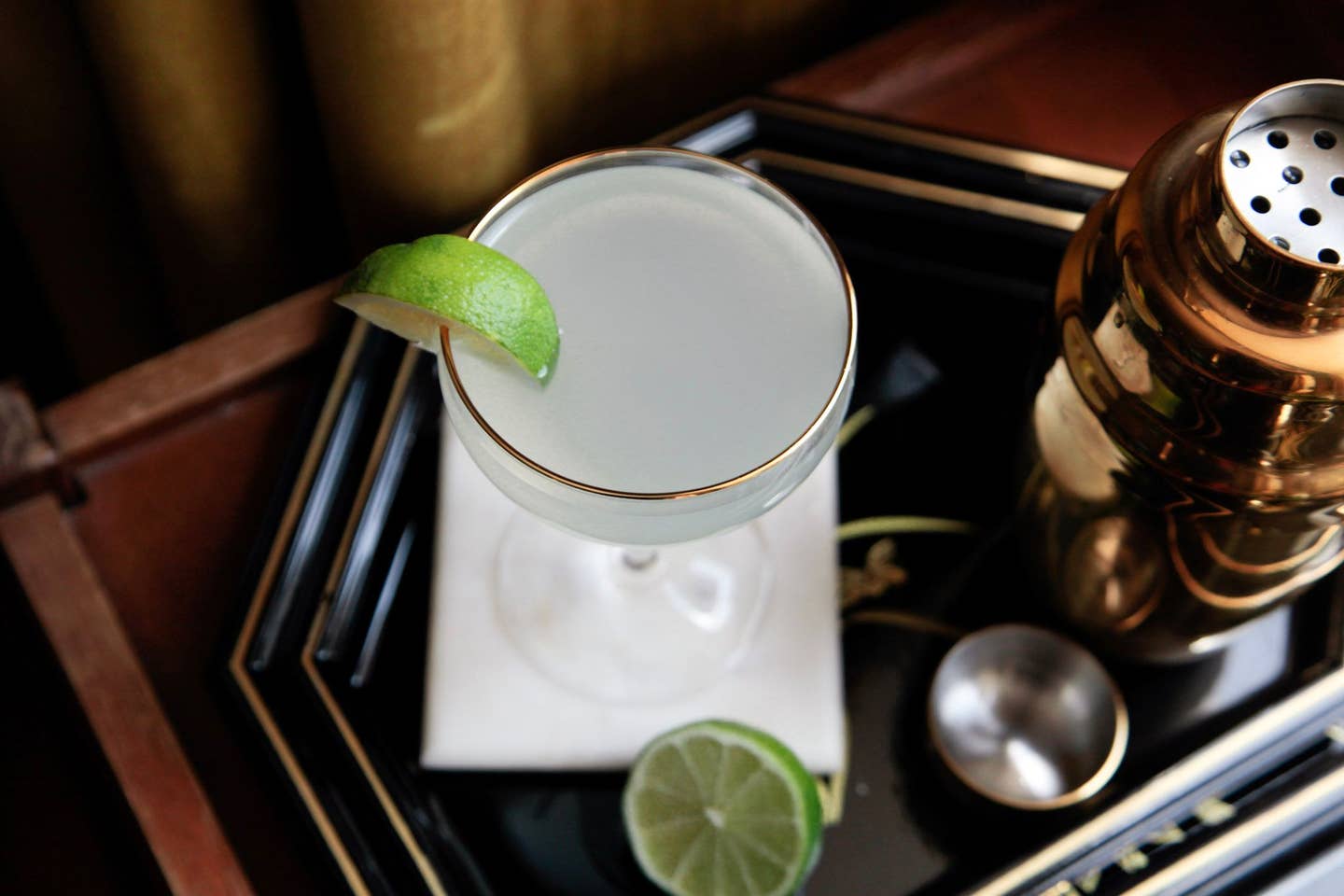
The Gin Gimlet Is Deceptively Simple—Here’s How to Make Each Ingredient Shine
And stay true to the storied English cocktail’s seafaring roots.
Ask any bartender what the classic gimlet recipe means to them, and you’ll likely get a variety of answers belonging to one of two camps: fresh lime juice or lime cordial. Even for a cocktail with only two or three ingredients, it’s nearly impossible to zero in a singular and definitive recipe. So I consulted with bartenders past and present to get a sense of the full picture. Keeping the drink’s storied history in mind can empower any professional or home bartender to determine which approach yields a tastier result.
The original gimlet was a blend of gin and lime cordial, a fruity syrup devised to preserve lime juice, which was traditionally consumed by British sailors to prevent scurvy on long sea voyages. A version of the drink made specifically with Rose’s brand cordial was canonized by London bartender Harry Craddock in his iconic 1930 Savoy Cocktail Book.
Alex Day, David Kaplan, and Nick Fauchald—owners of New York City’s legendary cocktail bar Death & Co—acknowledge the drink’s seafaring history in their 2018 Cocktail Codex, as a jumping off point for their own contemporary recipe, made with fresh lime juice and sugar—sort of a “daiquiri made with gin”—for brightness and a more pointed acidity.
Here, I’ll break down both approaches, complete with a homemade cordial recipe for your enjoyment and experimentation.
Base Spirit
There are plenty of styles of gin to choose from when making a classic gimlet. Plymouth was historically considered the gin of choice for this drink, and many bartenders—including the folks at Death & Co—still favor its slightly sweet flavor profile and soft juniper notes over pine-ier, London Dry-styles. “Plymouth Gin” was initially a term used for the style of spirit produced in Plymouth, England, but now the name belongs exclusively to the port city’s only remaining distillery.
These days, the brand offers several different expressions, including both a classic and an overproof gin, each produced using the same seven base botanicals: orris root, lemon and orange peel, coriander, cardamom, angelica, and juniper. The classic bottling is rich, citrusy, and aromatic, while the navy-strength (i.e. overproof) version, which Death & Co. shakes with house-made lime cordial for its classic gin gimlet, results in a bolder cocktail with a more structured backbone.
Citrus

Whether you’re making a from-scratch lime gimlet or batching out your own homemade cordial, fresh, whole citrus is key. In general, bottled juices don’t provide the same brightness and intensity you’ll get from the fresh stuff, so start in the produce section whenever possible.
Choosing the right kind of limes for making gimlets is somewhat simple—generally speaking, large Persian limes will yield more juice and are less acidic than Makrut or Mexican (also known as Key) limes. The nuances of aroma vary between varieties, but all make a lovely gimlet. As with any citrus, choose fruits that are firm and heavy, with unblemished skin.
Juicing can easily be done by hand using a manual juicer of any style (most bartenders favor handheld metal squeezers). If you prefer a motorized juicer, keep in mind that they tend to grind more seeds, pith, and skin into the liquid, which can add bitter notes; consider passing mechanically extracted juice through a fine strainer before using.
Regardless of the lime component’s final form, as with any citrus-based cocktail, a gimlet should always be shaken. This emulsifies the drink’s texture and creates a more balanced and refreshing result.
Simple Syrup
Simple syrup is a staple for any bar, made up of equal parts white sugar and water in its most straightforward form. Using a syrup rather than granulated sugar in your shaker ensures a smoother and more uniform consistency with no undissolved gritty traces settling at the bottom of your glass. To make simple syrup, combine water and superfine sugar in equal parts (by volume) in a container and whisk until the sugar has dissolved. Simple syrup can be stored for up to two weeks in an airtight container in the fridge.
Pro tip: Sugar can mellow “hard” qualities in cocktails. If your Gimlet is a bit too bitter or acidic, season to taste with simple syrup and briefly re-shake to correct the flavor.
Garnish

Most Gimlet recipes, fresh or traditional, call for garnishing with either a fresh lime wedge or wheel, although some bartenders also like to express the oils of a twist or “coin” of citrus skin over the glass. Others garnish with a dehydrated (and fully edible) lime wheel, which is a great and attractive technique for minimizing waste, and a drop or two of lime or orange bitters. Experiment with finishing touches to land on a style that suits your personal taste.
Recipes


Céline Bossart is a certified sommelier and freelance journalist covering wine, spirits, and travel; in addition to SAVEUR, her work has appeared in Wine Enthusiast, Liquor.com, NBCNews, VinePair, Delish, The Spruce Eats, and more. When she's not traveling, she enjoys spending quality time at home in Brooklyn with her cat, Pearl.
Keep Reading
Continue to Next Story










